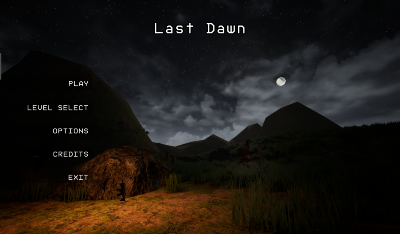
Last Dawn (Nov, 2023 - Mar, 2024)
Project Status:
Complete
Project Type:
Course Work
Project Duration:
4 Months
Software Used:
UE5
Languages Used:
Blueprints
Primary Role(s):
Lead System Designer
Visit the ITCH.IO Page...
Last Dawn is a 4-month-long college project involving 5 game developers. In the final month, 3 artists were responsible for art assets, and one musician developed the soundtrack. This project was built from a blank slate and evolved into a fully playable horror-style RPG.
My main role for this project was Lead Systems Designer. I personally created the lightning ability, main HUD, AI, items, and the hospital level. I played a major role in developing the first-person character, airgun, telekinesis, tripmines, and sanity mechanics. I also created a hunger and inventory system, which we decided to scrap during development to better align the game with our core pillars.
Month 1
Month 1 was dedicated to setting up our team's GDD, Jira, P4V, MVP, and defining our game's core pillars. During this time, we discussed our skill sets, best roles, the game's theme, and which perspective to build in. We settled on a first-person horror survival game with an emphasis on resource management and player choice in how to explore the levels, taking inspiration from the Resident Evil series. Our team began work on the base mechanics needed for the game, including inventory, items, base AI, player character, NPCs, basic weapons, and hunger, stamina, thirst, and health systems, along with the base map, resource gathering, and crafting.
Month 2
Month 2 was dedicated to enhancing the base gameplay and mechanics we created in Month 1. However, about halfway through the month, we hit a wall. While the hunger, inventory, and item systems were functional, crafting and resource gathering were far too ambitious for our team's scope. After a group meeting, we decided to cut some of the content we originally wanted and reevaluated our four core pillars. We chose to focus on providing the player with more options for traversing levels and removed the survival aspect altogether. At this point, we shifted our attention to creating new weapons and abilities for the players. I began heavy development on a lightning ability for water levels, drawing inspiration from BioShock.

In the initial stages, I created a notify from a hand animation that would cast a line trace to detect a specific blueprint class. Based on whether the target was water or an AI, a specific reaction would occur. If the target was an AI, the system would trigger a stun event to play an animation. If the target was water, an AOE event would be called, which would then trigger the stun event on all overlapping actors for a set period of time. I also implemented code that would double any damage dealt to an actor during stun time. Later, I added particle effects to the water, player, and AI to provide additional feedback to the player when the stun was active.
In the final prototype, our team created a UI to showcase which ability the player had equipped and a mana system to limit the number of charges the player could use. I also created a prototype showcase level for the mechanic I developed. The next four clips are demonstrations of version 2.
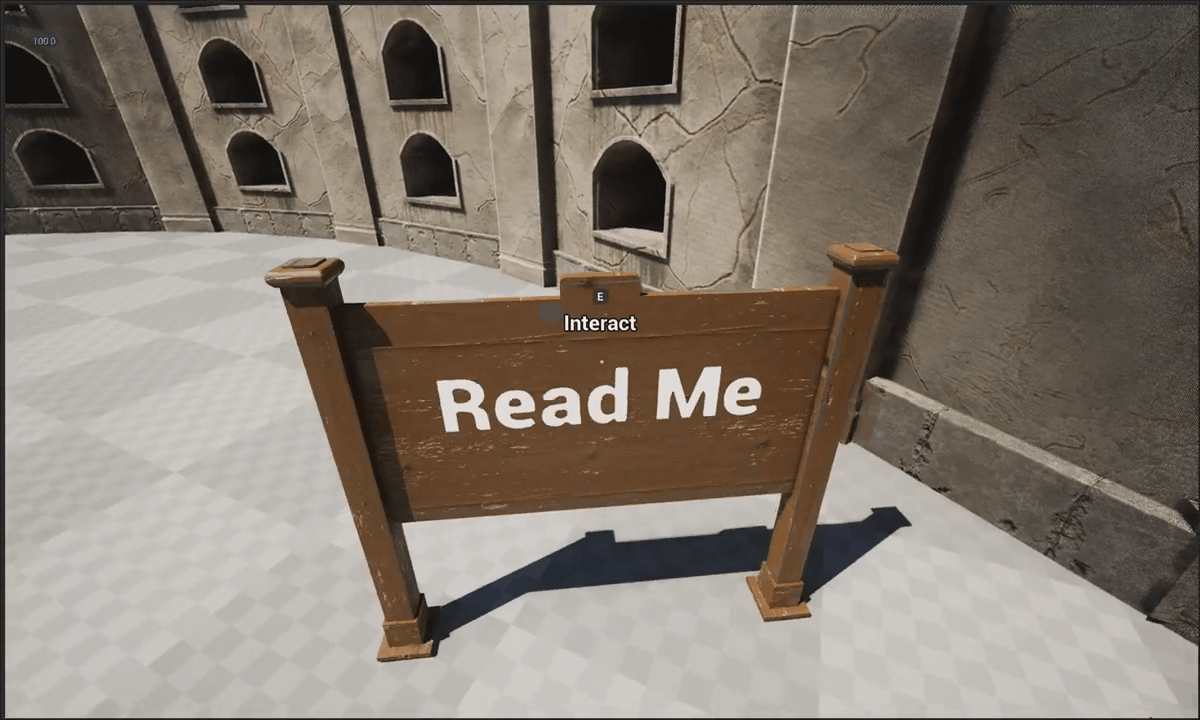
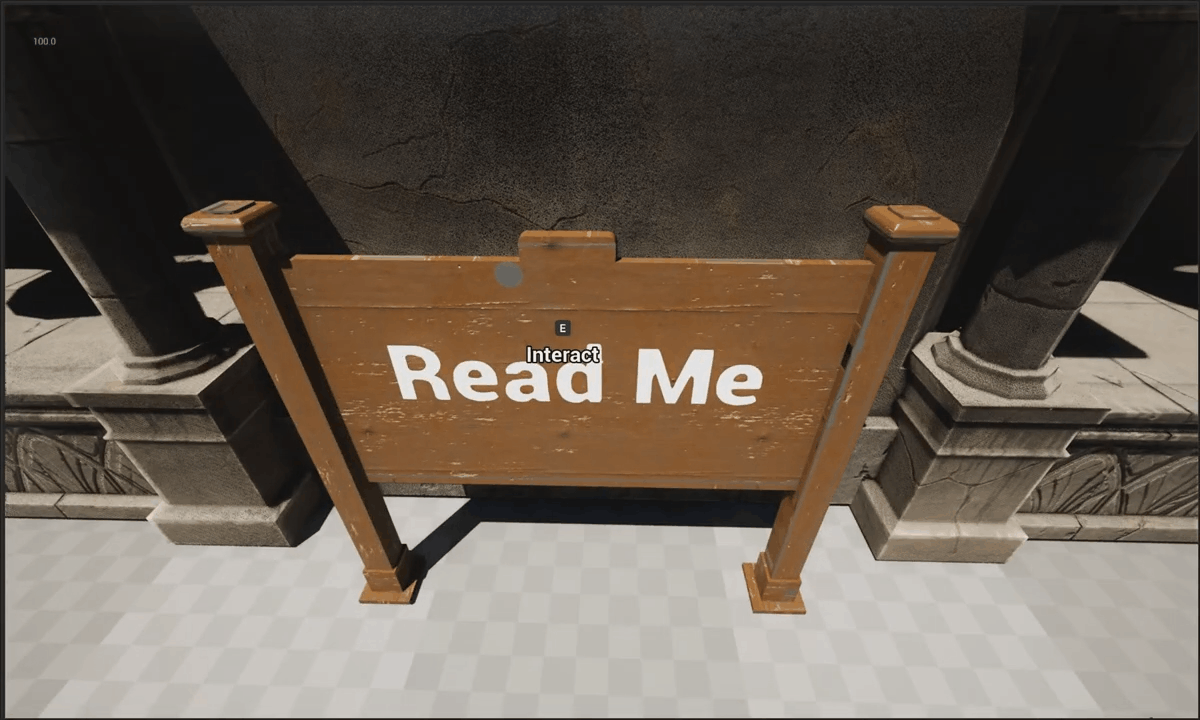
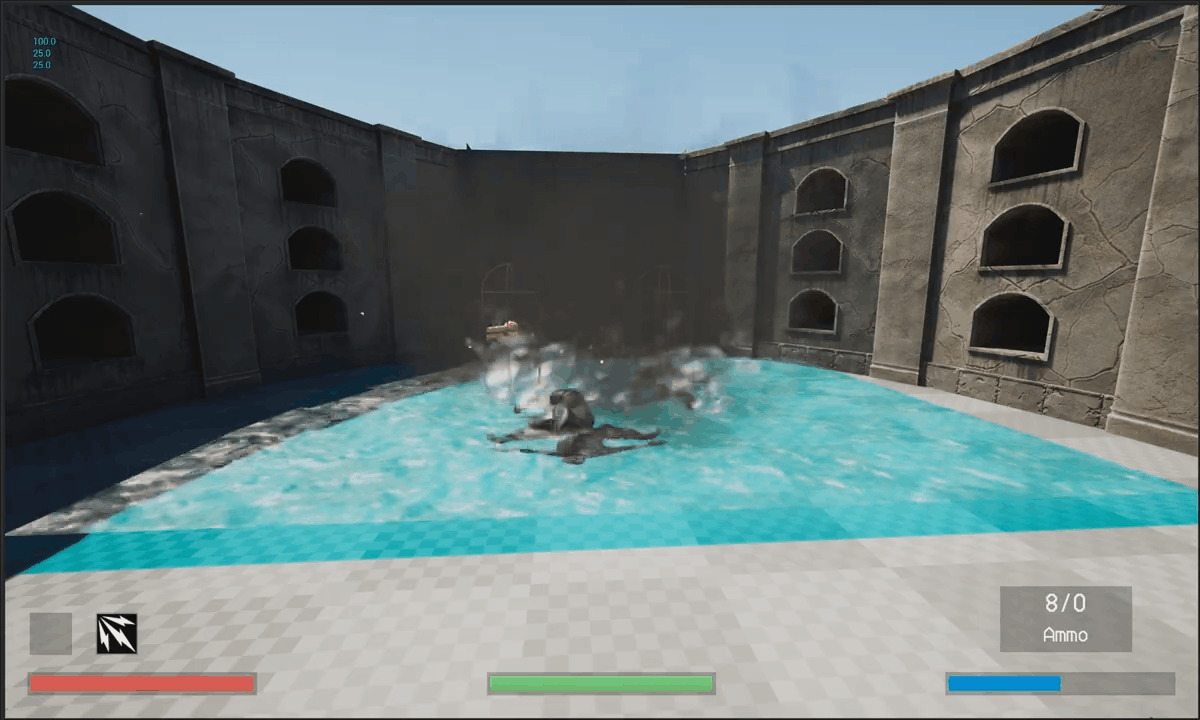

In the final weeks of Month 2, each team member created a level to introduce IPMS for their respective mechanics. Wanting an area for the player to gather medical resources, I created a hospital level and introduced unique water areas for the player to use the lightning ability on. These included bathrooms, spilled water jugs, etc. The level is too long to clip, but I'll have a full playthrough listed below.
Full Playthrough of Hospital Level Version 1
Month 2 concluded with us receiving feedback from playtesters. We added the bug-related feedback into Jira to address during Month 3 and during any downtime.
Month 3
In Month 3, it became clear that some of our mechanics still needed refining. We needed additional player feedback, our levels and IPMs required a more cohesive structure, and there were bugs that needed to be fixed. Our team decided to split tasks based on our different skill sets. Three team members focused on level design, while another member and I concentrated on refining mechanics and systems. I then began refining the mechanics for the airgun, tripmine, sanity, telekinesis, and lightning abilities.
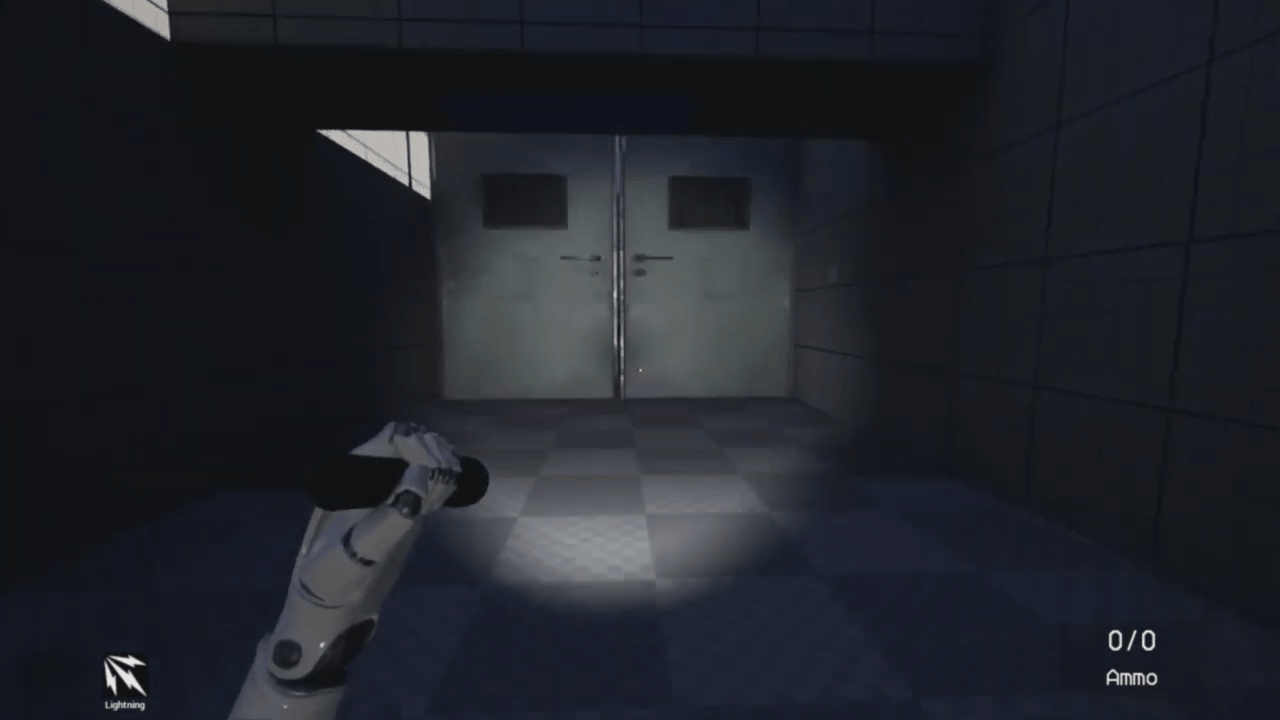
Our team discussed and decided that we wanted our lightning ability to also be used for finding secrets and prompting player choices. In turn, I added a feature where the line trace from the lightning could also trigger a function on switches. Using interfaces, when a switch was hit, the corresponding door would open. Since the player has a limited amount of mana, they would have to choose whether to use it for exploration or for combat.
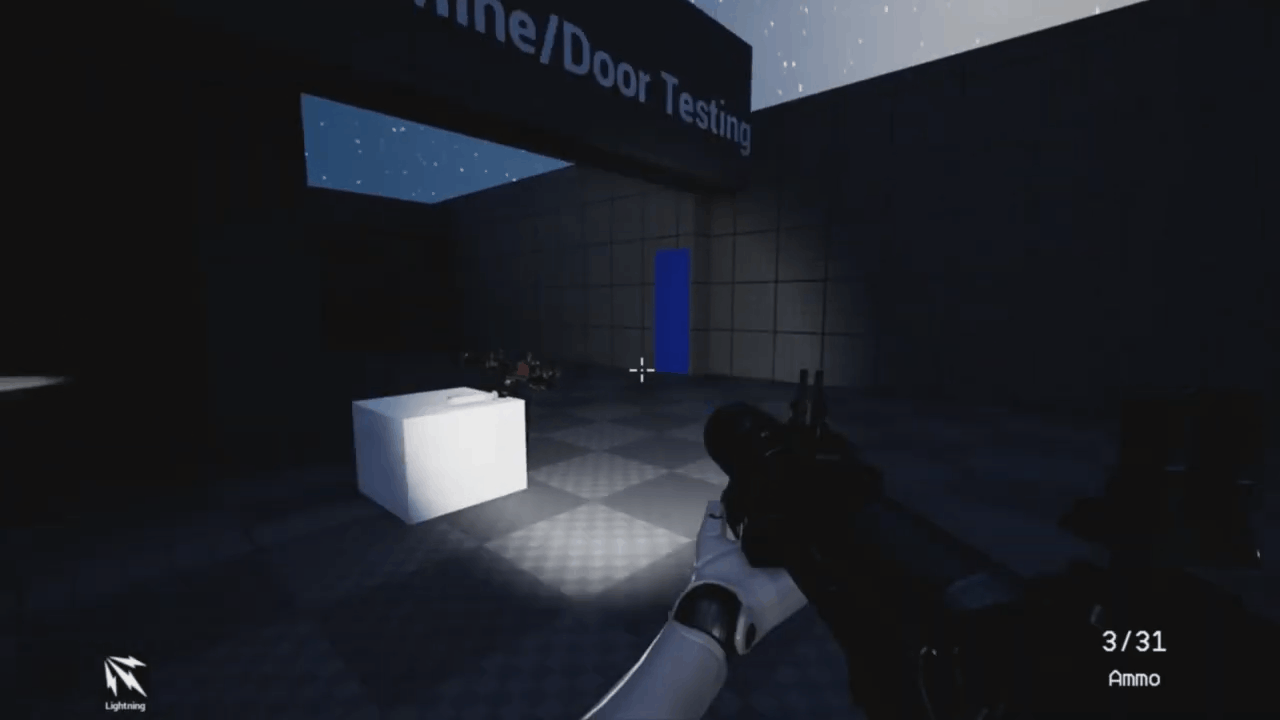
Our original tripmine mechanic allowed mines to be placed on any surface without a limit on the number that could be deployed. This resulted in unbalanced and confusing gameplay for the player. To address this, I enhanced the existing code by turning the tripmines into a weapon with limited charges. I used a line trace to detect the object the player was looking at, and created a game object with an overlap event to notify the player when mines could be placed on a valid surface. This gave us, as developers, control over where tripmines could be deployed, while still giving players the freedom to choose when and where to place them.
I concluded the month by adding additional player feedback to the sanity system and reworking telekinesis to prevent physics surfing. Any additional time was spent on minor bug fixes.
Month 4
Month 4 was dedicated to bug fixing, level cohesion, and asset importing to ensure the game was in a solid state for the end of the project. Our team began by compiling a list of all the assets that required custom artwork. I also created a proposal for a sound designer to develop custom music and effects for the project. As assets were completed, we implemented them into the game. I spent the final three weeks polishing the game into the finished product it is today
Final Thoughts
Last Dawn was an ambitious and rewarding project that pushed our team to grow as developers. Despite challenges with scope management and last-minute asset integration, we worked together to create a cohesive and engaging horror RPG. The experience taught us the importance of flexibility, iteration, and teamwork. By refining our ideas and focusing on what truly mattered to the gameplay, we were able to deliver a polished final product that reflected our passion and hard work. Overall, Last Dawn was not only a success in terms of the game we created but also in the lessons we learned along the way. I could continue to describe what this project is, but it would never do it complete justice. Please, if you have the time, check it out yourself—link below. If you've made it this far, thank you so much for reading, and I hope you enjoy my work. :)
Play Last Dawn Here- https://jmredd.itch.io/last-dawn